Abstract
The β-lactamase from Klebsiella pneumoniae E70 behaved in a similar fashion to the TEM-2 plasmid mediated enzyme on reaction with clavulanic acid. Both enzymes produced two types of enzyme–clavulanate complex, a transiently stable species (t½=4min at pH7.3 and 37°C) and irreversibly inhibited enzyme. In the initial rapid reaction (2.5min) the enzymes partitioned between the transient and irreversible complexes in the ratios 3:1 for TEM-2 β-lactamase and 1:1 for Klebsiella β-lactamase. Biphasic inactivation was observed for both enzymes and the slower second phase was rate limited by the decay of the transiently stable complex. This decay released free enzyme for further reaction with fresh clavulanic acid, the products again partitioning between transiently stable and irreversibly inhibited enzyme. This cycle continued until all the enzyme had been irreversibly inhibited. A 115 molar excess of inhibitor was required to achieve complete inactivation of TEM-2 β-lactamase. Hydrolysis of clavulanic acid with product release appeared to occur with the inhibition reaction, which explained this degree of clavulanic acid turnover. The stoichiometry of the interaction with Klebsiella β-lactamase was not examined. The penicillinase from Proteus mirabilis C889 was rapidly inhibited by low concentrations of clavulanic acid. The major product was a moderately stable complex (t½=40min at pH7.3 and 37°C); the proportion of the enzyme that was irreversibly inactivated was small. The cephalosporinase from Enterobacter cloacae P99 had low affinity for the inhibitor and only reacted with high concentrations of clavulanic acid (k=4.0m−1·s−1) to produce a relatively stable complex (t½=180min at pH7.3 and 37°C). No irreversible inactivation of this enzyme was detected. The rates of decay of the clavulanate–enzyme complexes produced in reactions with Proteus and Enterobacter enzymes were markedly increased at acid pH.
Full text
PDF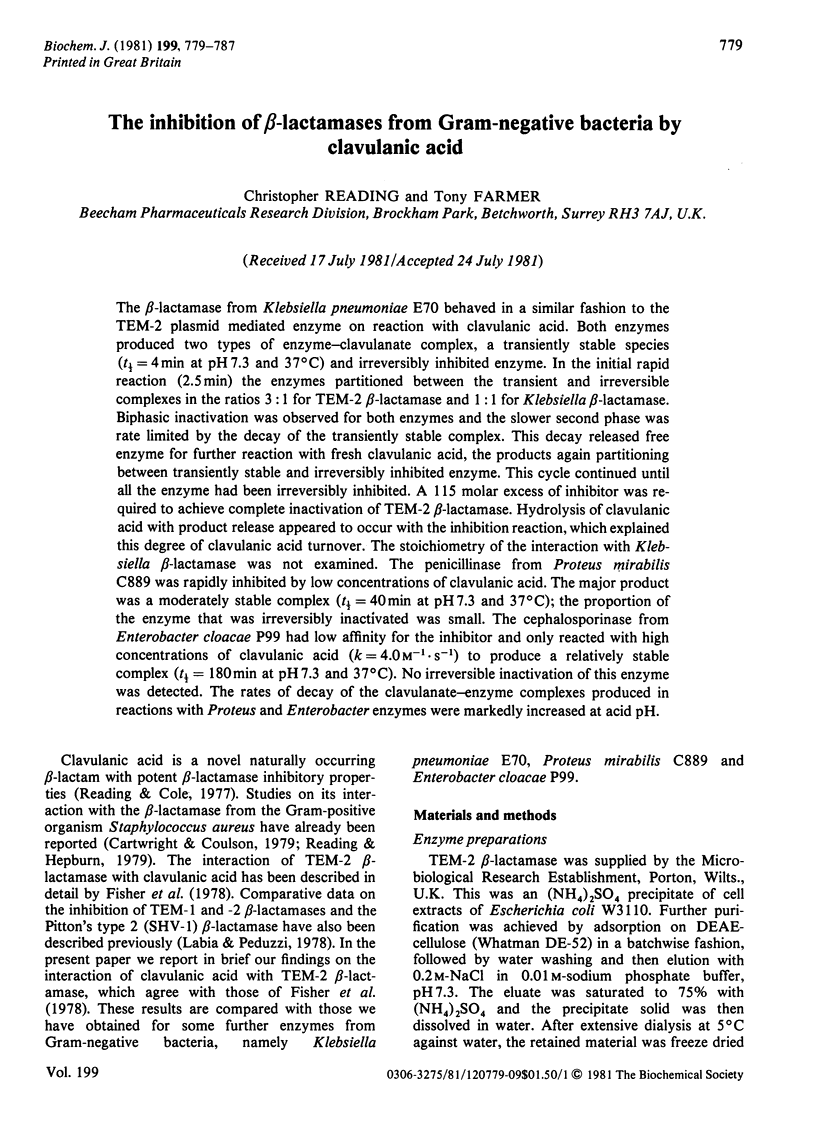
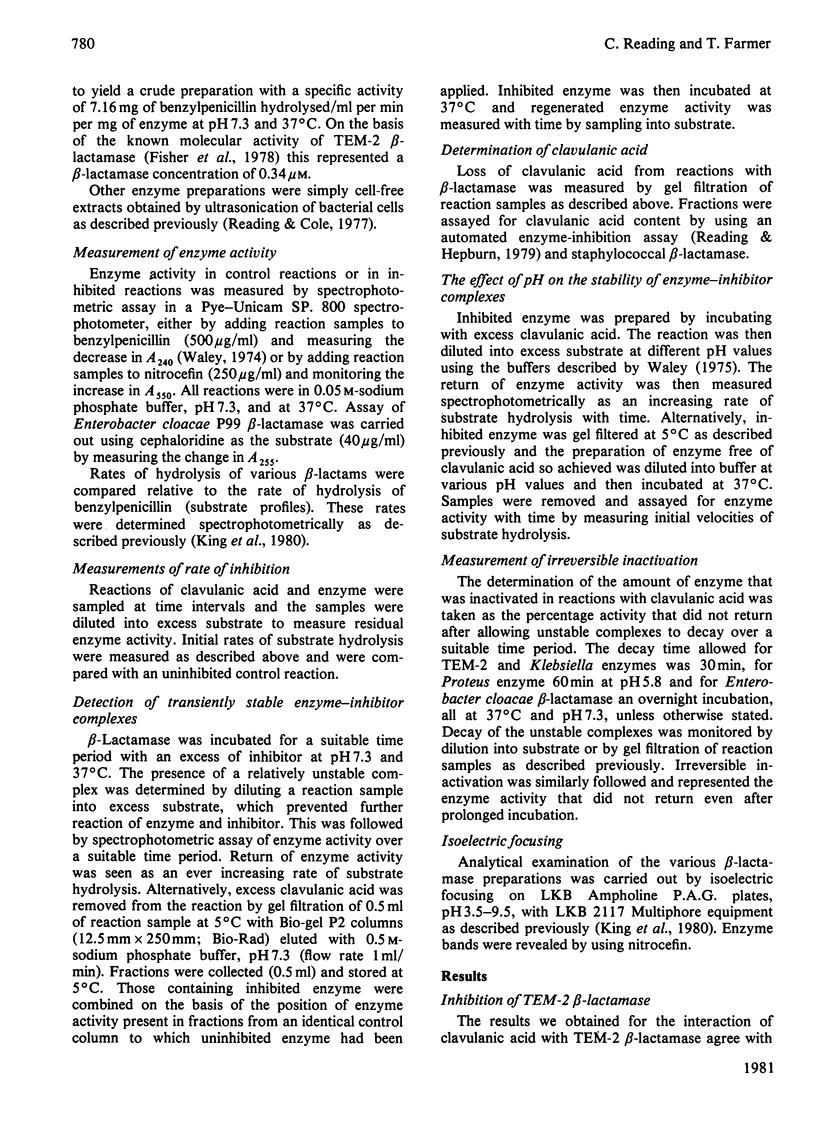
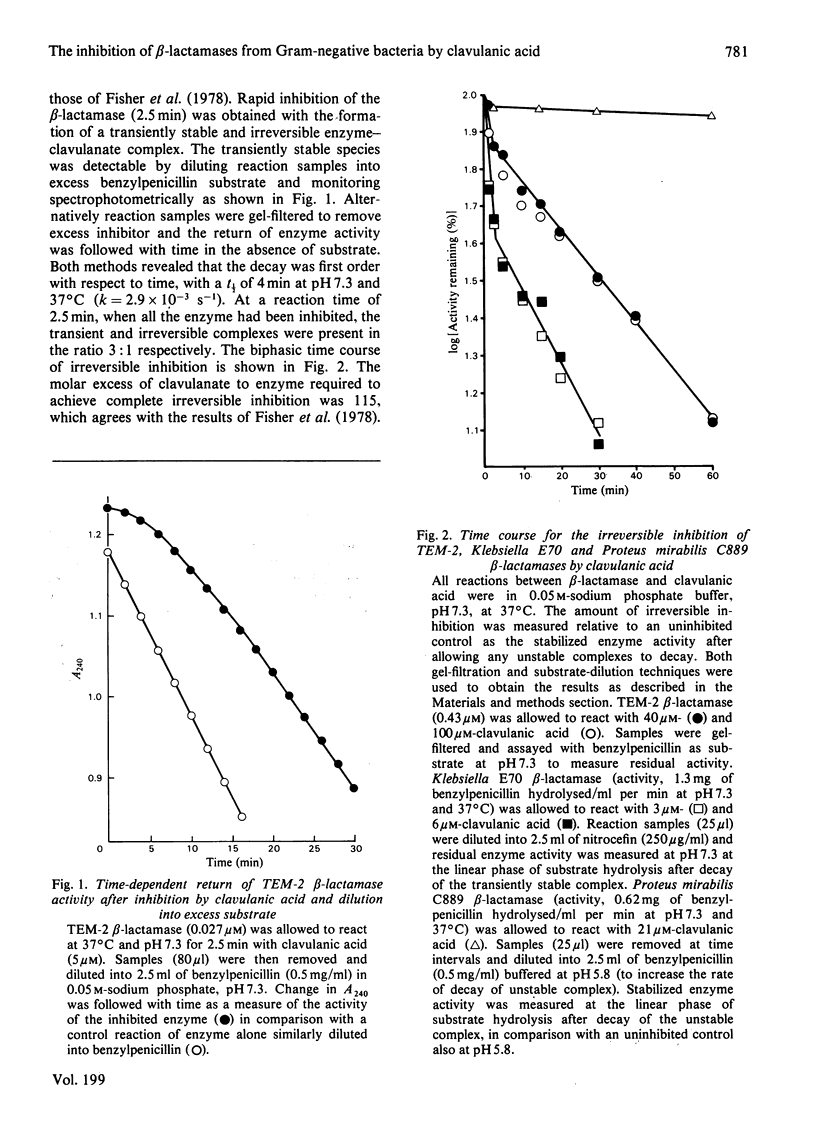
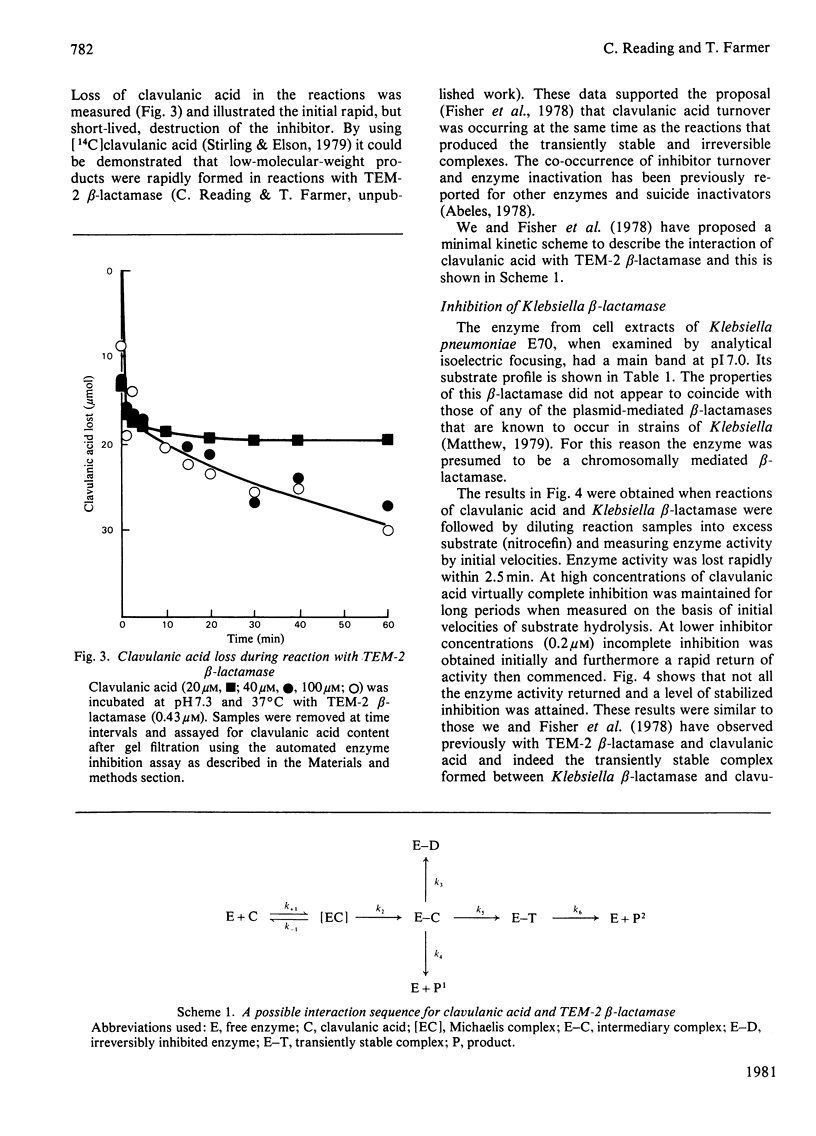
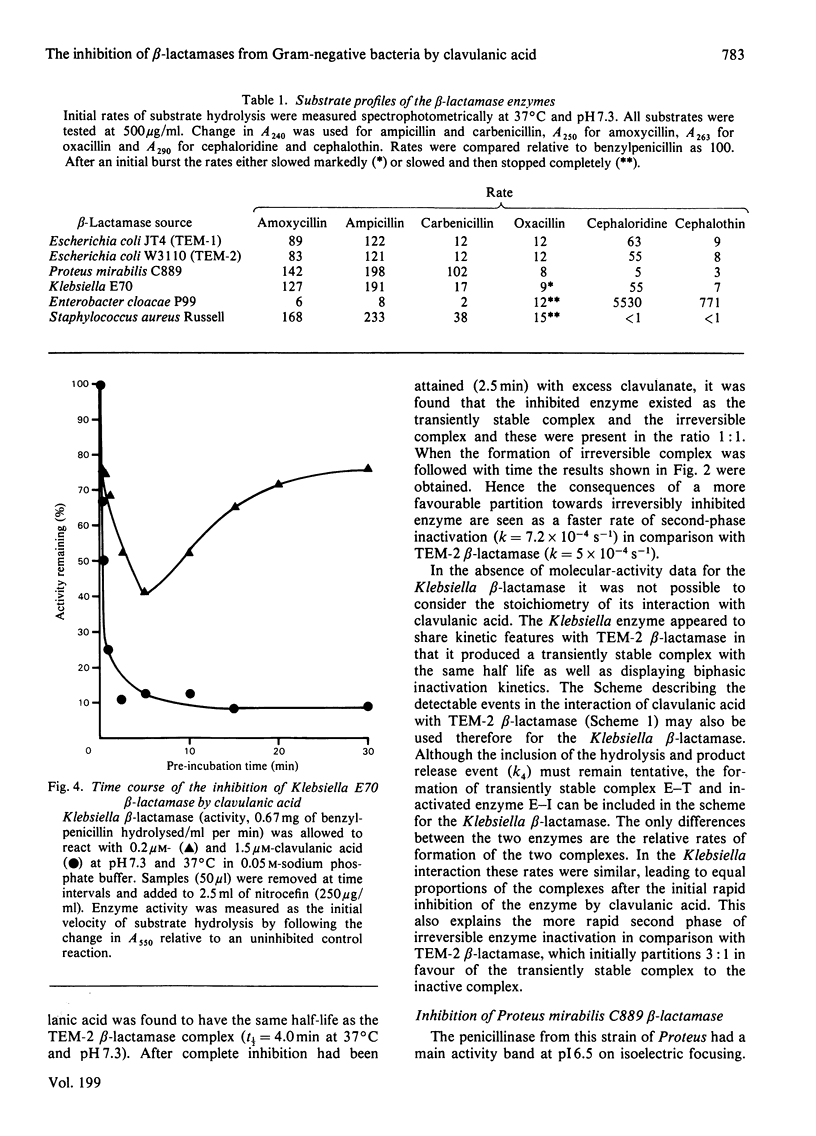
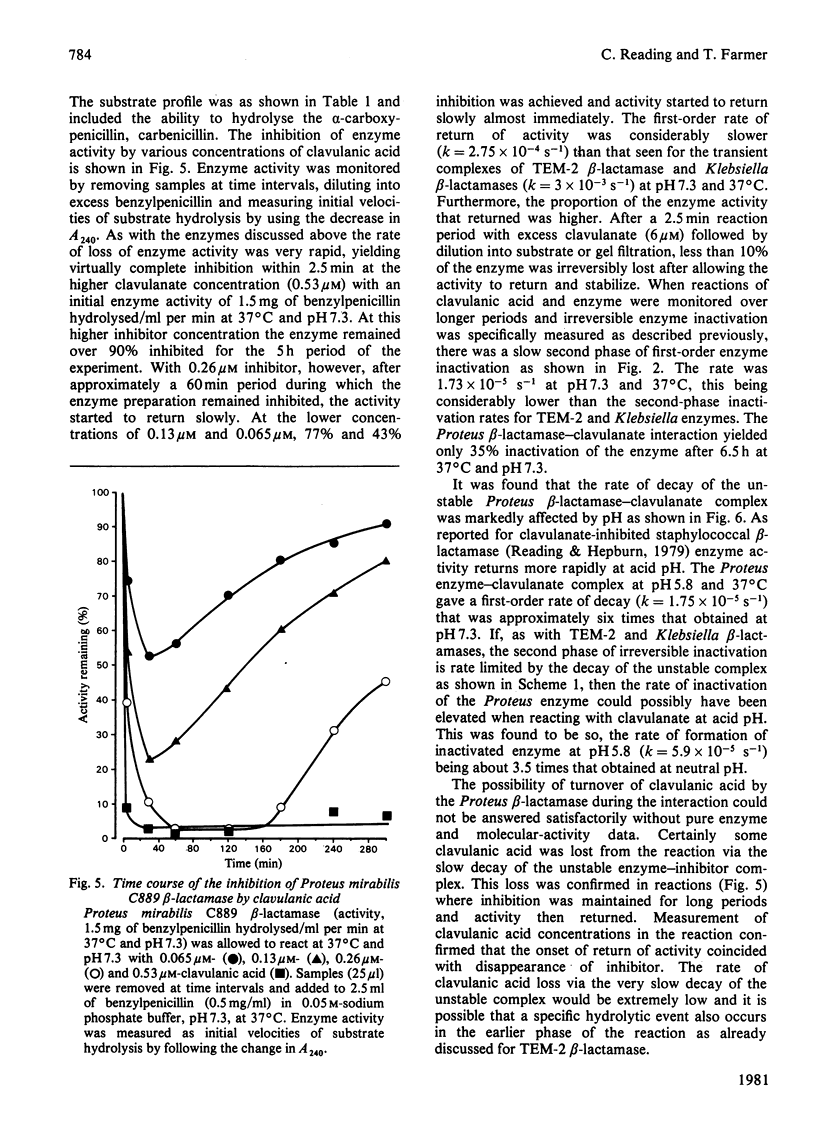
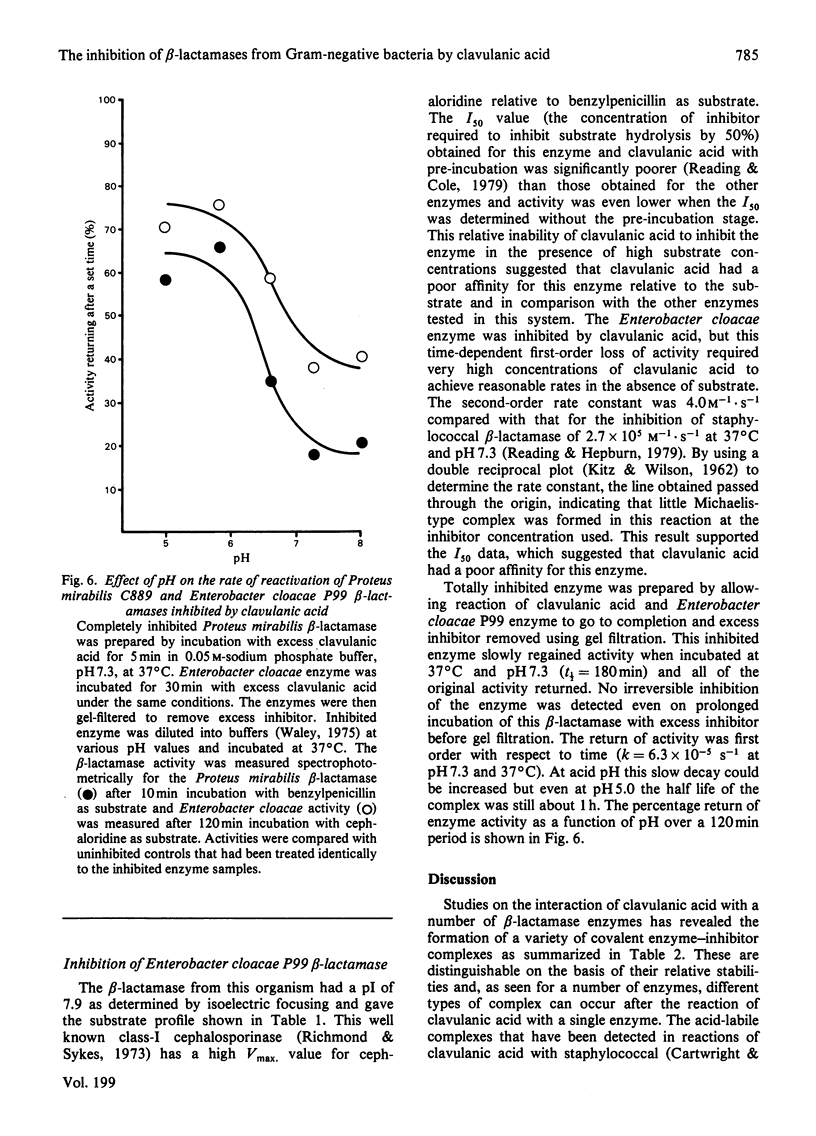
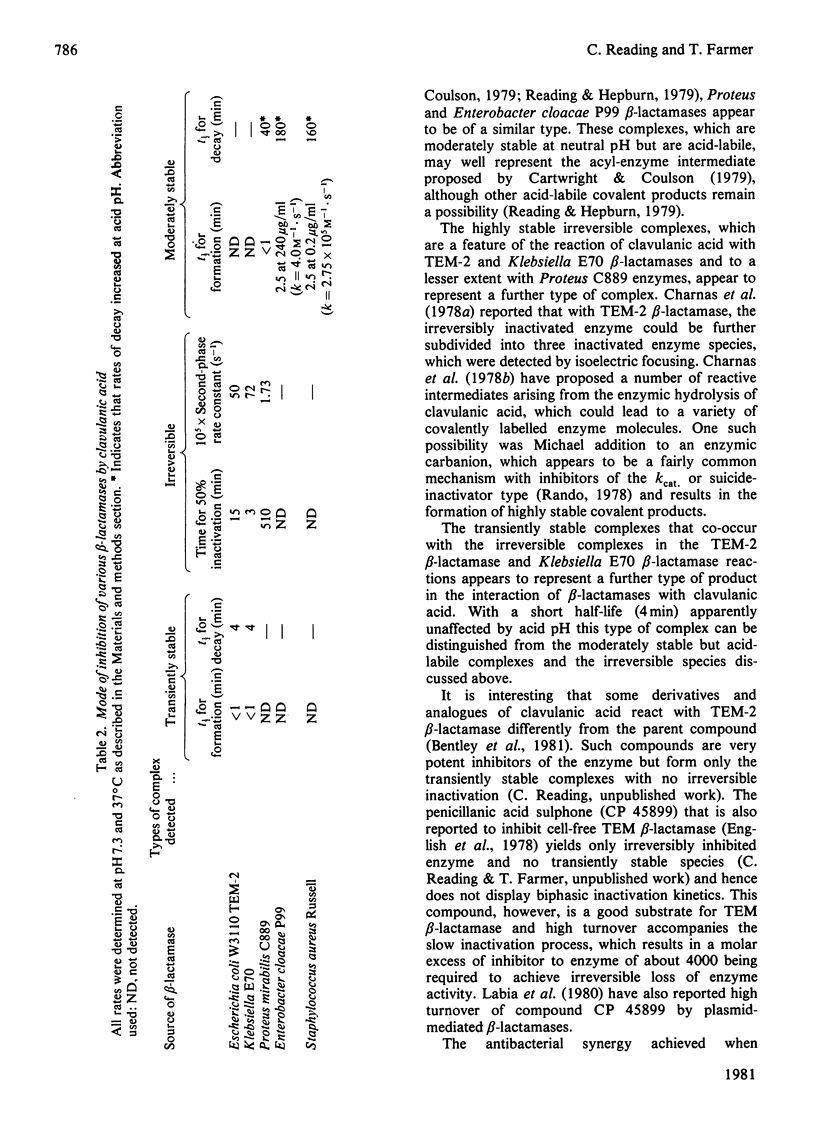
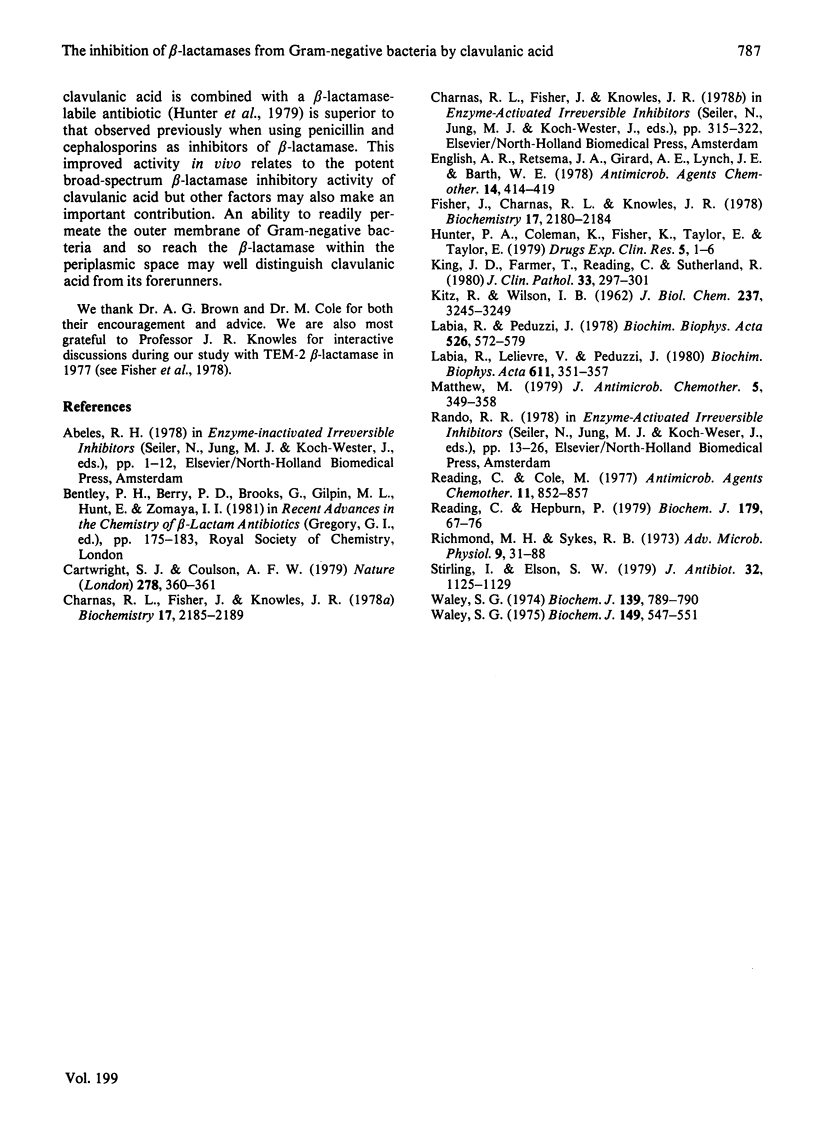
Selected References
These references are in PubMed. This may not be the complete list of references from this article.
- Cartwright S. J., Coulson A. F. A semi-synthetic penicillinase inactivator. Nature. 1979 Mar 22;278(5702):360–361. doi: 10.1038/278360a0. [DOI] [PubMed] [Google Scholar]
- Charnas R. L., Fisher J., Knowles J. R. Chemical studies on the inactivation of Escherichia coli RTEM beta-lactamase by clavulanic acid. Biochemistry. 1978 May 30;17(11):2185–2189. doi: 10.1021/bi00604a025. [DOI] [PubMed] [Google Scholar]
- English A. R., Retsema J. A., Girard A. E., Lynch J. E., Barth W. E. CP-45,899, a beta-lactamase inhibitor that extends the antibacterial spectrum of beta-lactams: initial bacteriological characterization. Antimicrob Agents Chemother. 1978 Sep;14(3):414–419. doi: 10.1128/aac.14.3.414. [DOI] [PMC free article] [PubMed] [Google Scholar]
- Fisher J., Charnas R. L., Knowles J. R. Kinetic studies on the inactivation of Escherichia coli RTEM beta-lactamase by clavulanic acid. Biochemistry. 1978 May 30;17(11):2180–2184. doi: 10.1021/bi00604a024. [DOI] [PubMed] [Google Scholar]
- KITZ R., WILSON I. B. Esters of methanesulfonic acid as irreversible inhibitors of acetylcholinesterase. J Biol Chem. 1962 Oct;237:3245–3249. [PubMed] [Google Scholar]
- King J. D., Farmer T., Reading C., Sutherland R. Sensitivity to carbenicillin and ticarcillin, and the beta-lactamases of Pseudomonas aeruginosa in the UK in 1978-79. J Clin Pathol. 1980 Mar;33(3):297–301. doi: 10.1136/jcp.33.3.297. [DOI] [PMC free article] [PubMed] [Google Scholar]
- Labia R., Peduzzi J. Cinetique de l'inhibition de beta-lactamases par l'acide clavulanique. Biochim Biophys Acta. 1978 Oct 12;526(2):572–579. doi: 10.1016/0005-2744(78)90147-x. [DOI] [PubMed] [Google Scholar]
- Matthew M. Plasmid-mediated beta-lactamases of Gram-negative bacteria: properties and distribution. J Antimicrob Chemother. 1979 Jul;5(4):349–358. doi: 10.1093/jac/5.4.349. [DOI] [PubMed] [Google Scholar]
- Okamoto H., Tipayang P., Inada Y. Fibrin membrane endowed with biological function. V. Multienzyme complex of uricase, catalase, allantoinase and allantoicase. Biochim Biophys Acta. 1980 Jan 11;611(1):35–39. doi: 10.1016/0005-2744(80)90039-x. [DOI] [PubMed] [Google Scholar]
- Reading C., Cole M. Clavulanic acid: a beta-lactamase-inhiting beta-lactam from Streptomyces clavuligerus. Antimicrob Agents Chemother. 1977 May;11(5):852–857. doi: 10.1128/aac.11.5.852. [DOI] [PMC free article] [PubMed] [Google Scholar]
- Reading C., Hepburn P. The inhibition of staphylococcal beta-lactamase by clavulanic acid. Biochem J. 1979 Apr 1;179(1):67–76. doi: 10.1042/bj1790067. [DOI] [PMC free article] [PubMed] [Google Scholar]
- Richmond M. H., Sykes R. B. The beta-lactamases of gram-negative bacteria and their possible physiological role. Adv Microb Physiol. 1973;9:31–88. doi: 10.1016/s0065-2911(08)60376-8. [DOI] [PubMed] [Google Scholar]
- Stirling I., Elson S. W. Studies on the biosynthesis of clavulanic acid. II. Chemical degradations of 14C-labelled clavulanic acid. J Antibiot (Tokyo) 1979 Nov;32(11):1125–1129. doi: 10.7164/antibiotics.32.1125. [DOI] [PubMed] [Google Scholar]
- Waley S. G. A spectrophotometric assay of beta-lactamase action on penicillins. Biochem J. 1974 Jun;139(3):789–790. doi: 10.1042/bj1390789. [DOI] [PMC free article] [PubMed] [Google Scholar]
- Waley S. G. The pH-dependence and group modification of beta-lactamase I. Biochem J. 1975 Sep;149(3):547–551. doi: 10.1042/bj1490547. [DOI] [PMC free article] [PubMed] [Google Scholar]


